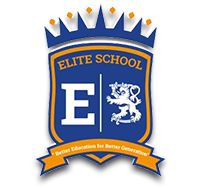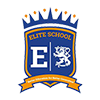Design
I. Course description and aims
Design, and the resultant development of new technologies, has given rise to profound changes in society, transforming how we access and process information, adapt our environment, communicate with others, solve problems, work and live. MYP design challenges students to apply practical and creative-thinking skills to solve design problems; encourages students to explore the role of design in historical and contemporary contexts; and raises students’ awareness of their responsibilities when making design decisions and taking action.
Inquiry and problem-solving are at the heart of design. MYP design requires the use of the design cycle as a tool, which provides: the methodology to structure the inquiry and analyse problems; the development of feasible solutions; the creation of solutions; and the testing and evaluation of the solution. In MYP design, a solution can be a model, prototype, product or system independently created and developed by students.
MYP design enables students to develop not only practical skills but also strategies for creative and critical thinking.
The aims of MYP design are to encourage and enable students to:
- enjoy the design process, and develop an appreciation of its elegance and power
- develop knowledge, understanding and skills from different disciplines to design and create solutions to problems using the design cycle
- use and apply technology effectively as a means to access, process and communicate information, model and create solutions, and to solve problems
- develop an appreciation of the impact of design innovations for life, global society and environments
- appreciate past, present and emerging design within cultural, political, social, historical and environmental contexts
- develop respect for others’ viewpoints and appreciate alternative solutions to problems
- act with integrity and honesty, and take responsibility for their own actions developing effective working practices.
II. Curriculum overview
The MYP promotes inquiry in design by developing conceptual understanding within global contexts.
Key concepts such as communication, communities, development and systems broadly frame the MYP curriculum.
Related concepts promote deeper learning grounded in specific disciplines. Examples of related concepts in MYP design include adaptation, ergonomics, sustainability and innovation.
Students explore key and related concepts through MYP
Global Contexts.
- Identities and relationships
- Orientation in space and time
- Personal and cultural expression
- Scientific and technical innovation
- Globalization and sustainability
- Fairness and development
The MYP curriculum framework offers schools flexibility to determine engaging, relevant, challenging and significant content that meets local and national curriculum requirements. This inquiry-based curriculum explores factual, conceptual and debatable questions in the study of design.
The MYP requires at least 50 hours of teaching time for each subject area in each year of the programme. For students participating in MYP eAssessment, the IB recommends 70 hours of guided learning each year in MYP years 4 and 5.
III. Assessment Criteria
Each design objective corresponds to one of four equally weighted assessment criteria. Each criterion has eight possible achievement levels (1–8), divided into four bands with unique descriptors that teachers use to make judgments about students’ work.
Criterion A: Inquiring and analysing
Students are presented with a design situation, from which they identify a problem that needs to be solved. They analyse the need for a solution and conduct an inquiry into the nature of the problem.
Criterion B: Developing ideas
Students write a detailed specifcation, which drives the development of a solution. They present the solution.
Criterion C: Creating the solution
Students plan the creation of the chosen solution, then follow the plan to create a prototype sufcient for testing and evaluation.
Criterion D: Evaluating
Students design tests to evaluate the solution, carry out those tests and objectively evaluate its success. Students identify areas where the solution could be improved and explain how their solution will impact on the client or target audience.

